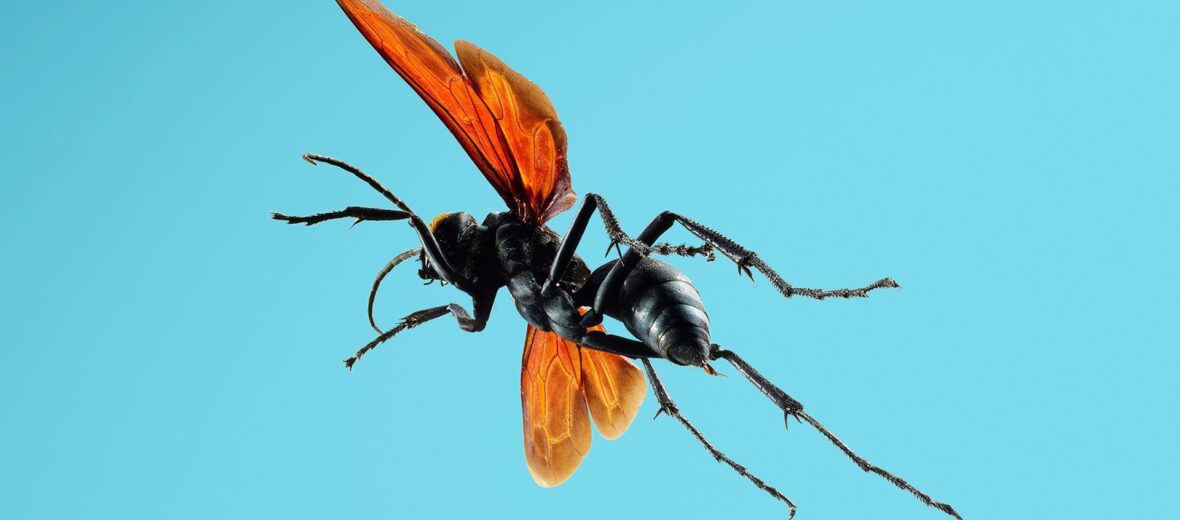
Not the kind of creature you want to upset, the tarantula hawk preys on just that… tarantulas. They are the stuff of nightmares! They are among the largest of the wasp species, they are fast, they can be ferocious, and they have one heck of a sting. Ever see the Alien movies? This parallels that experience from a tarantula’s perspective.
First the Stats…
Scientific name: Pepsini
Length: Up to 3 inches
Wingspan: Up to 4 inches
Lifespan: Up to 3 months
Now on to the Facts!
1.) The tarantula hawk is found on every continent sans Europe and Antartica.
2.) The males have straight antennae, the females antennae are curly.
3.) Adults are nectavores (feed off of the nectar of flowers). The larvae are carnivores (feed on meat).
4.) The female will hunt down a tarantula and envenomate her victim with a powerful sting. The sting’s venom paralyzes her prey. Once paralyzed, the female wasp will take the tarantula back to her burrow, lay a single egg on the abdomen, and cover the burrow to prevent potential escape.
5.) Once impregnated with the egg, the paralyzed victim becomes host to the grub that eats the tarantula alive over a period of several weeks!
But wait, there’s more on the tarantula hawk!
6.) Males do not have the ability to sting. However, females have a 1/4 inch stinger!
7.) Roadrunners are the primary predator of these potent critters.
Did you know…?
The tarantula hawk’s sting has been reported to be the 3rd most painful sting in the insect kingdom, after the bullet ant (#2) or the executioner wasp (#1).
8.) Tarantula hawks are diurnal (active during the day).
9.) When angered or threatened, these wasps produce a skunk-like odor.
10.) The venom causes extreme pain and paralysis. Whereas most other wasp’s venom causes tissue damage.
Now a Short Tarantula Hawk Video!
Now a video of someone getting stung by a tarantula hawk!
Forward to 10:30
Also, check out the Critter Science YouTube channel. Videos added frequently!
Want to suggest a critter for me to write about? Let me know here.



